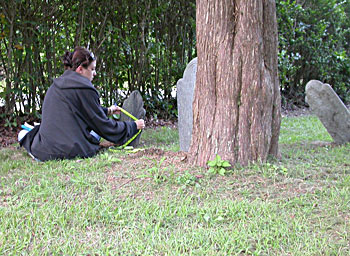Cemetery Inventory Tools
The real power of digital tools is seen through the development of a relational database, linked to a geographic information system (GIS) to allow the mapping and analyses of spatial data. This process of full digital documentation should be considered from the very beginning of the planning process. Digital tools can improve historical research efficiency, the speed and accuracy of surveys, the quantity and quality of archival information directly linked to site features, and the documentation of conditions, treatments, and maintenance. Digital tools provide powerful analytical capabilities, and can enhance the generation of creative presentations for project discussions, funding proposals, and educational programs. Key steps involve:
- Establish the Location Site Map - spatial tools like GIS software, aerial images
- Develop the Survey and Illustrated User's Manual - Office software
- Design the Database - Database software
- Create Smart Maps - Link the digital site map with the database
Below-ground investigations of a cemetery are sometimes also necessary. Other tools and technologies are involved, and the need for professional archaeologists may be relevant. Further information:
 |
| Surveyor measuring headstone |